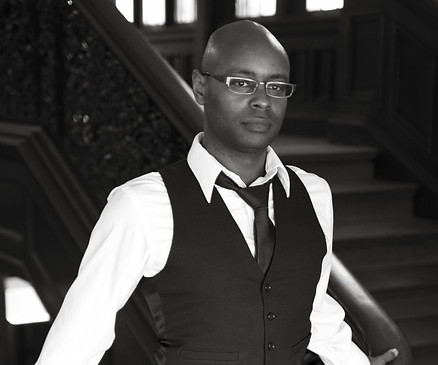
You mean Blues is a dance? Not just a dance, but an entire family of several dances (such as the "Slow Drag" and the "Fishtail") that are aesthetically, culturally and musically connected.
Like Swing dance, Blues dance originated and evolved from African rhythms and movements. However, Blues dancing was never widely practiced as a "social" or performance dance in the United States outside of the Black communities; so it developed and thrived in juke joints and at Blues house parties and rent parties, giving it a more intimate feel.
Because the Blues dances never caught on with White America the way Swing dancing did, it remained strongly entrenched in African principles of movement, not only in the motion of the hips, but in the characteristic creation of, and dancing within, a boundary.
Blues dance is strongly tied to Blues music, and many aspects of Blues dancing (for example, call and response, emotional intensity, and tension and release) are directly related to the music to which it is danced. There are many types of Blues music (rural, urban, electric, delta, modern), and also many types of Blues dance, all with very different nuances and emotions. Within the different types of Blues music (and dances done to it) are varying tempos.
Early Blues dances often contained very simple one-step or two-step patterns. Dances such as the "Slow Drag" and the "Mooche" have been passed down to us relatively unchanged from the original forms. In its modern context, Blues dance incorporates many aspects of these original dances as well as incorporating ideas from modern concepts of partner connection, improvisation, and natural body movement.
Blues is also an emotion that you bring to your dancing. Blues dance, like most Black vernacular dances, enables intense individuality in expressing the music, emphasizing that the music, not the dancer, leads the dance; the dancer is simply the interpreter. Blues dance demonstrates the passion of the entire range of human emotions - from sadness to joy - not just sensuality. If you don't have a visceral reaction to the music, your partner, and the environment, then you are missing the true beauty of Blues dance.
Some observers and dancers who have not studied Blues dance other than by simple observation often overlook the nuance of the dances. To their eyes, the sensual appearance of the dances may overshadow their basis and structure. Blues dancing at its best is rooted in subtle physical communication and connection between your partner, yourself, and the music and therefore is almost impossible to learn to execute well simply by watching.
Learning to Blues dance enables the dancer to more fully understand dance concepts such as simplicity, clarity, creativity, expression, intensity, and musical and emotional interpretation that are critical to advanced social dancing of any kind.

BLUES
Excerpts from Colorado Blues Dance with edits by Damon Stone

To learn even more about Blues we highly recommend you check out Damon Stone's blog. He is largely regarded as one of the foremost authorities on Blues idiom dance.
His articles will give you an incredible understanding & appreciation of the history of Blues Dance & its culture, tips for aspiring Blues Dancers, & so much more.

